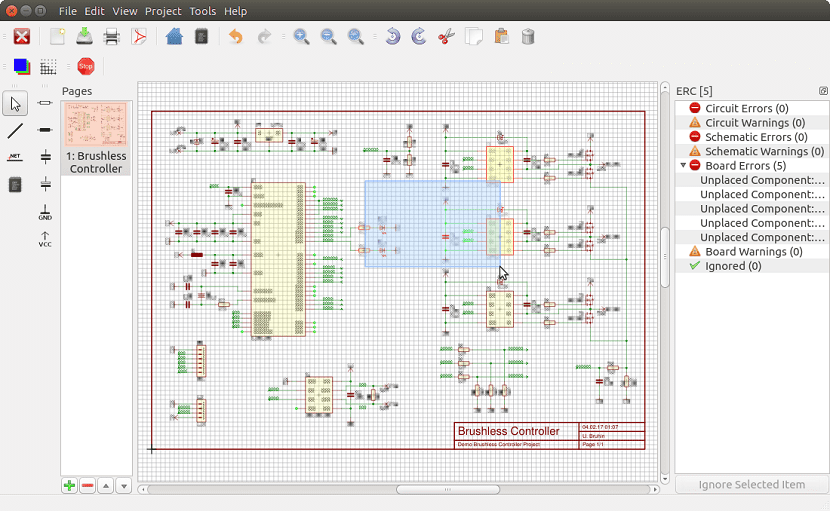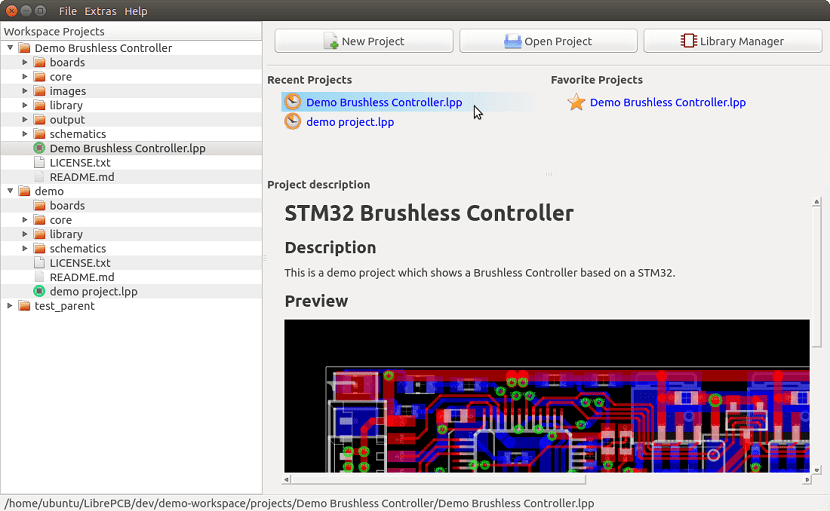
LibrePCB is an open source and circuit editor (GNU GPLv3), a free EDA software to develop circuit boards.
The schematic editor is very easy to use and still powerful. Thanks to the innovative library concept, you don't need to worry about choosing footprints when drawing the outline.
And unlike other EDA tools, you also don't need to worry about manually assigning symbol pins to footprint blocks later in the dashboard editor.
When adding components to the schematic, most EDA tools allow you to choose them from a simple list of installed libraries (often named by the manufacturer).
LibrePCB has a fairly intuitive graphical interface in addition to its control panel that will give us access to the projects that we have in development, with an ideal management of the last edited and the projects that we use the most.
In addition, LibrePCB allows the user to be able to incorporate any library from past projects, with which in a simple way, the desired library to use is simply downloaded and installed.
Among its main characteristics we can highlight the following:
- Multiplatform (Unix / Linux, Mac OS X, Windows)
- Multilingual (both application and library elements)
- All-In-One: project management + library / schematic / dashboard editors
- Intuitive, modern and easy-to-use graphical user interface.
- Very powerful library design with some innovative concepts.
- Human-readable file formats for libraries and projects
- Multi-PCB function (different PCB variants of the same schematic)
- Automatic synchronization of the list of networks between the scheme and the board.
How to install LibrePCB circuit editor on Linux?
At the moment there are no stable versions available yet, but there are some packages that will facilitate the installation of this great tool if you don't want to compile it on your system.
One of those ways is with the help of Flatpak packages, with which we simply must have the support to be able to install applications of this type in our system.

If you don't have this support added to your system, You can visit the following article in which we explain how to do it.
Now having Flatpak support, we can install the application by opening a terminal and executing the following command:
flatpak install --user https://flathub.org/repo/appstream/org.librepcb.LibrePCB.flatpakref
If you already had this type of installation, you can check if there is a more current version, executing the following command in your terminal.
flatpak --user update org.librepcb.LibrePCB
And ready with it, they will already have the latest version of this free circuit editor installed, they just have to look for the launcher in their application menu to be able to run it on their system.
If they cannot find the launcher, they can open the application with the help of the following command:
flatpak run org.librepcb.LibrePCB
Another method we have to obtain this application is with the help of an AppImage, which we can download by opening a terminal and in it executing the following commands:
wget https://download.librepcb.org/releases/0.1.0/librepcb-0.1.0-linux-x86_64.AppImage -O librepcb.AppImage
Once the download is done, now we must give execution permissions to the downloaded application with the following command:
chmod +x ./librepcb.AppImage
And finally we can run this application by double clicking on the downloaded file or from the terminal we can run it with the following command:
./librepcb.AppImage
Installation on Arch Linux
For those who are Arch Linux users, they will be able to install this tool from AURTherefore, they must have an AUR assistant for their installation.
Can I recommend some in this post. Now we open a terminal and in it we execute the following command:
yay -S librepcb
The last method we have is with the help of docker containers, it is important to have docker installed on the system to be able to build the container.
To be able to carry out the construction tWe have to open a terminal and execute the following commands in it:
mkdir librepcb-docker && cd librepcb-docker wget https://raw.githubusercontent.com/LibrePCB/LibrePCB/master/dev/docker/Dockerfile wget https://raw.githubusercontent.com/LibrePCB/LibrePCB/master/dev/docker/build_container.sh wget https://raw.githubusercontent.com/LibrePCB/LibrePCB/master/dev/docker/run_container.sh
Now we proceed to build the container with:
./build_container.sh
Finally we can run the application with:
./run_container.sh librepcb
When they get it out for parcel, I'll really try it.
From the screenshots, it looks like EAGLE PCB.